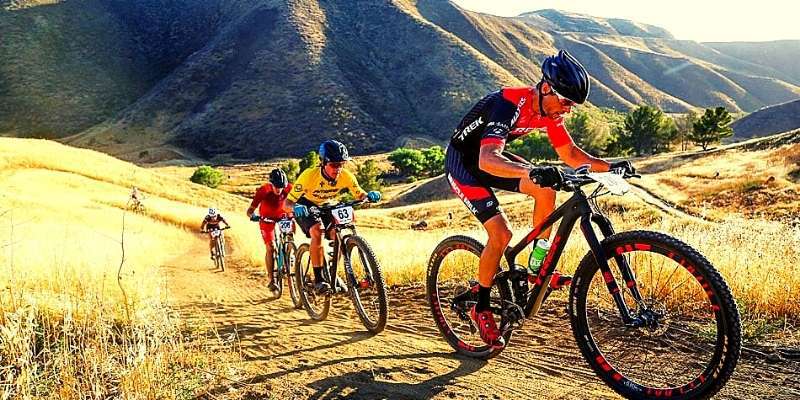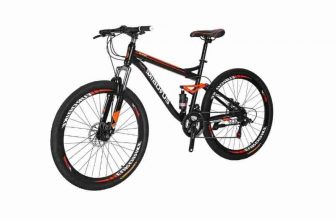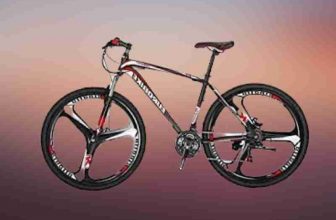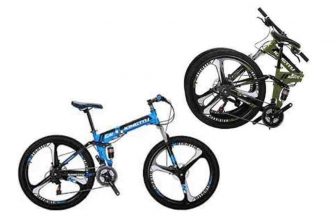
Specific mountain bikes perform better than others when it comes to climbing. Long-travel bikes climb more quickly than hardtails and trail bikes with short travel, regardless of a bike’s wheel size. Everyone has a hard time climbing a mountain bike. Besides its weight and suspension, your bike has soft tires and wide handlebars that make it easier to turn and bounce over rocks than push them uphill.
Secret When You Are Climbing
The secret to climbing better on your mountain bike is practice, no matter your fitness level or body type. While you may increase your speed significantly if you always blast uphill as quickly as possible, you will need to back off and go at a pace you can handle to acquire solid climbing techniques. Speed will arrive in due time.
Also, try to be upbeat. Most long climbs conclude with a fantastic descent!
Climbs that last a long time are more likely to be on fire roads, paved roads, or single-track trails, which are less challenging. For at least a quarter-mile, grades may range from barely noticeable to a challenging 12 percent or higher. In hilly areas, grinder trails that are more than three miles long and steeper than 6-14 percent are common.
Climbing long, steady hills on a mountain bike isn’t much different from riding a road bike, except the road may be bumpier. You will climb faster and enjoy the experience more if you relax, find your rhythm, pace yourself, and mentally prepare yourself.
Specific mountain bikes are better suited for climbing than others. Regardless of wheel size, hardtails and trail bikes with short-travel full-suspension climb better than long-travel bikes. You will need some extra patience climbing steep hills if you have a bike with 6″ or more travel, but you will make up for it when you come down!
Tips for Climbing Better on Your Mountain Bike
If you’re gassing out too quickly, you can help yourself climb better on your mountain bike by doing the following:
Make sure you breathe steadily.
Racehorses inhale and exhale with every step. Maintain a steady pace as you inhale and exhale as you exert yourself during the climb. To “catch up” before the next climb, maintain a good breathing pace once you have finished the climb.
Get mental.
As with other sports, mastering the art of rock climbing requires practice and concentration. If you look up and see a big climb ahead, the best thing to do is divide it into smaller pieces. Sometimes you have to push beyond the feeling of burning legs and solely concentrate on the tree up ahead near the large boulder. This can be a challenge. When you are almost there, you turn your concentration to the gully higher up. By breaking the climb into smaller, more manageable chunks, you’re less likely to view it as a single, overwhelming obstacle that you’ll never be able to overcome.
Stay seated.
Getting off your seat is occasionally necessary for a quick burst of speed, but caution! Use this approach extremely sparingly because it will weary you very soon. Staying seated is significantly more efficient because you’re not supporting your weight. Sitting further forward on the saddle horn and leaning a bit more forward will help you maintain control of your front wheel when the climb is steep.
Keep a steady tempo.
In the long run, a lower gear with a greater cadence is more efficient than a higher gear with a lower cadence. You might appear faster if you use your energy to power through a taller gear, but this will sap your reserves more quickly. You can keep your muscles free of lactic acid accumulation as long as you maintain a higher cadence and stay in an aerobic zone. However, if you go into anaerobic mode while pedaling at a slower cadence, your muscles won’t be able to remove the lactic acid as quickly. Consequently, you’ll burn out too quickly.
Keep the momentum going.
Don’t let the turn and obstacle delays slow you down too much. Repeatedly pulling yourself back up to speed burns up a lot of energy. To maintain momentum through the steep sections, it’s essential to speed up before them.
Forks and shocks can be made more rigid by adjusting the spring tension.
Your bicycle’s fork and shock can be adjusted to accommodate climbs, so set it to climb mode if it has an adjustable compression fork and shock. When the trail does not have a lot of challenging sections, I stiffen my shock and fork. This makes the ride harder, but it also makes climbing more efficient. A soft, squishy ride is terrific for maintaining control on bumpy things and downhills but is often not as efficient for climbing.
Keep yourself well-hydrated at all times.
Before I begin biking, I always pre-hydrate myself. To stay hydrated during my bike ride, I will drink water constantly. My high school soccer coach used to tell us all: “It takes 20 minutes for that water to reach your system after you drink it.” I recommend drinking plenty of water at least 20 minutes before the game begins. Getting another drink does not have to be left until you are incredibly thirsty. It is impossible to stay hydrated if you do this.
Increase the frequency with which you ride a bicycle.
If you’re still having difficulty making it up the climbs, work on putting yourself into better cardiac fitness. You may need to improve your cardiovascular exercise program. I’ve noticed that I can complete the same climbs with less effort than I was able to at the beginning by the end of the season.
I realize that many of us (myself included) can’t ride as often as possible. As a result, I’ve started walking briskly for 2-3 miles three times per week to maintain my aerobic fitness. I’ll take these brisk walks and sprinkle in 1-minute gentle jogs (just like circuit training on a treadmill). These walks are just another incredibly excellent way to increase my cardio. The few months since I started doing this have significantly impacted my riding.
Make sure your tires are properly inflated.
When I hopped on my bike the last time, I realized that I was going slower than usual and with more effort than usual. My rear tire started making a strange noise, and that’s when I realized what was wrong. My next step was to check the pressure of my tires (I always ride with a small pump and gauge). It showed 15 psi upfront and 12 psi at the back. I pushed them both up to 28 psi, and it made a tremendous difference in the amount of work it took to get up to and maintain speed. I probably just dodged a pinch flat as well. Tire pressure is something I check more frequently now than I used to.
Conclusion
In conclusion, do your best. Hill climbing is difficult no matter what type of bike you have. Train and practice enough on your mountain bike, and you’ll be able to go faster up long continuous climbs. Climbing will always be challenging, but you’ll be moving faster. After you’ve improved your skills, the upward part can be even more enjoyable.
Improve your climbing skills with the assistance of a trainer.






